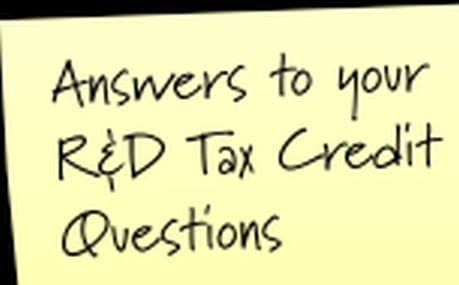Qualifying for R&D Tax Credits
“The avoidance of taxes is the only intellectual pursuit that carries any reward.” John Maynard Keynes
Q: Who qualifies for the R&D Tax Credit?
A: One of the common misconceptions about R&D Credit. Companies with teams of scientists in lab coats have this R&D Credit reserved for them. Any company working to solve a particular technical problem through trial and error can claim expenses associated with that problem-solving towards the credit. This can range from developing new software to providing engineering services needed to deliver a technical solution for a client.
If your company evaluates alternatives and uses principles that are technical in nature (i.e., engineering, computer science, or physical sciences) to solve any type of problem, then the R&D Credit is for you.

Q: Can a small business still benefit from the credit?
A: Yes. The 2015 PATH Act opened up the R&D credit for small businesses that have little to no taxable income. A qualified small business can now use the credit to offset up to $250,000 in payroll tax. Burden and are also able to offset AMT. A business is small when it on gross with less than $5 million in gross receipts. No gross receipts in the tax year 5 years prior to the year in which the credit is being claimed. This opens up the R&D Credit for immediate use by start-ups who traditionally could not use tax credits right away.
In general, companies can capture tax credits when there is qualified research through the R&D credit. And small businesses can carry the credit forward for 20 years. Therefore, if a company is performing qualified research activities. But does not see a direct need for tax credits. It can bank credits for future use in offsetting tax liability.
Related Article: What you should Know about Startup Equity and Valuing Equity in Start-Ups
Q: How do I claim the R&D Credit?
A: A taxpayer can claim the R&D Credit by completing Form 6765. In order to complete this form. A company must identify qualified research expenses (QREs) as defined by section 41(d) of the Internal Revenue Code. QREs get connected to qualified research activities. While there is a wide array of treasury guidance and tax court rulings governing what qualified the research. In general, you can count any wages, subcontractors, or supply expenses associated with the trial-and-error process used to solve technical problems.
Software companies can also claim any cloud expenses associated with development, testing, or “sandbox” server space. Identifying qualified research expenses usually requires guidance from third-parties with expertise in the various tax laws surrounding the credit.
Q: How long can I use the credit for?
A: As long as your company is performing qualified research activities it should be claiming the tax credit. You can carry forward unused credits for 20 years and backward for one year. You can also apply the credit retroactively to amended returns for the previous three open tax years. This means that companies who go back and amend returns to claim R&D credits for previous years can potentially receive a refund treasury check for taxes it paid before the applied credit.
Related Article: How to Value a Private Company: Best Practices and Methods
Q: What if the project I was working on failed?
A: The R&D Tax Credit law makes no distinction on whether or not the project has to be successful in order to claim R&D tax credits. The fact that research and development conducted by a company did not turn out a successful product. Negative solutions actually prove that the company performed qualified research and development since it shows that there was significant uncertainty. Not only does this apply to companies that have products that fail. Service-based firms that work to provide engineering solutions for a client but never receive a contract can also qualify.
Q: I work under contract to perform services for clients. Can I still claim the R&D Credit?
A: If your contracts are firm-fixed-price, then, generally, yes, you are still eligible for the R&D Credit. The IRS prohibits taxpayers from claiming R&D Credits for what they consider as “funded research.” The definition of funded research has been established through numerous landmark tax court cases in regards to the research and development tax.
In general, any company performing work under time and material or cost-plus contracts is not considered to be assuming enough risk should the research fail. Contractors that work under fixed-price fees and whose work is subject to several things. Such as inspection, testing, and acceptance are considered to be conducting non-funded research and are eligible for the tax credit program. Additionally, if your client can withhold payment until deficiencies are corrected, or if your projects contain warranty clauses, the R&D Tax Credit may be claimed.
Want help receiving the R&D Tax Credit you deserve to offset corporate tax hikes? Call or use the contact form to talk to a knowledgeable R&D Tax Credit Expert.
